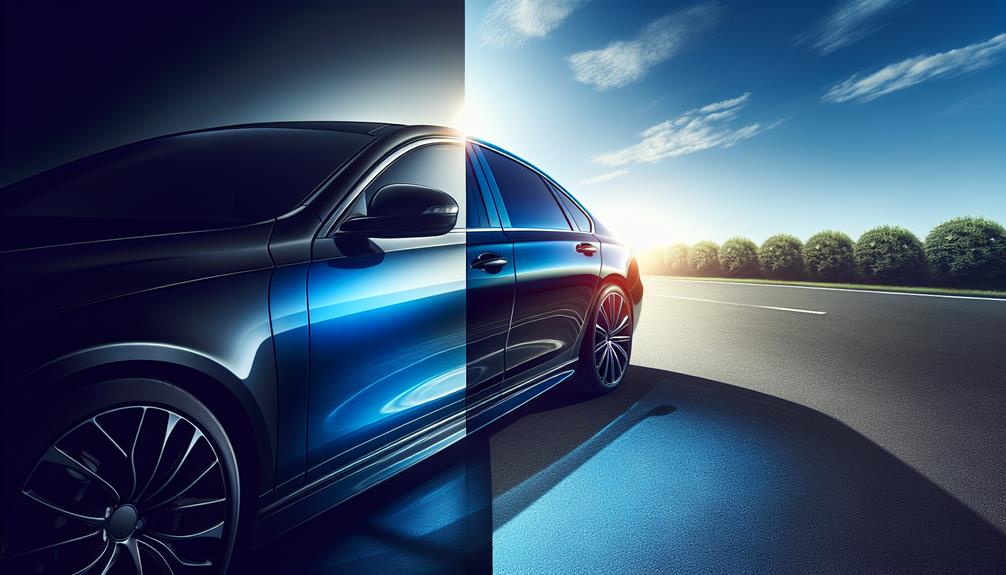
Dyed window tinting technology, while seemingly straightforward, involves a sophisticated interplay of materials science and practical application techniques. The process begins with a thin polyester film, which is then imbued with dye particles to achieve the desired level of solar radiation absorption and privacy. Incorporating auto glass tinting further enhances these benefits by providing an additional layer of protection and style. This layer not only diminishes glare and thermal intake but also provides a shield against UV radiation, thereby extending the lifespan of interior fabrics and surfaces. Importantly, the cost-effectiveness of dyed window tint arises from its relatively low manufacturing expenses and the longevity it imparts to vehicle interiors. However, to fully appreciate its value and efficacy, one must consider both the immediate benefits and the long-term implications of its use in various settings, much like the strategic integration of quality craftsmanship and expertise in maintaining and enhancing the performance of high-end vehicles.
Understanding Dyed Window Tint
Dyed window tint involves applying a layer of dyed film to glass, which absorbs and blocks a portion of the incoming light, thereby reducing glare and heat inside the vehicle. This method utilizes a simple yet effective technique where the dye in the film prevents certain wavelengths of sunlight from penetrating through the glass. The film typically consists of several layers: an adhesive layer that bonds to the window, the dyed layer that filters light, and a protective top coat that resists scratches and nicks.
The application process requires precision and expertise. Initially, the interior side of the window is thoroughly cleaned to eliminate any contaminants that could interfere with the adhesive. Subsequently, the film is carefully measured and cut to precisely fit the window pane. Once cut, the film’s backing is peeled off, and the film is applied using a squeegee to smooth out any bubbles and ensure a snug fit against the glass.
The choice of dye concentration in the film can vary, allowing for customization according to individual preferences for light blocking and privacy. Such customization fosters a sense of belonging among users, as they can tailor their vehicle’s appearance and functionality to reflect their personal style and comfort needs.
Benefits and Cost Savings
Often, the installation of dyed window tint results in significant cost savings over time, primarily through reduced energy consumption and enhanced protection of interior surfaces.
By blocking a substantial percentage of the sun’s harmful ultraviolet rays and reducing solar heat gain, dyed window tint ensures that indoor spaces remain cooler during warmer months. This mitigates the need for air conditioning, leading to lower energy bills. Furthermore, the tint’s ability to filter out UV light protects furnishings, carpets, and artworks from fading, thereby extending their lifecycle and reducing replacement costs.
In addition to energy savings, dyed window tint provides a cost-effective solution for enhancing privacy and security. The tint prevents outsiders from easily viewing the interior of a building or vehicle, thus adding an extra layer of privacy. This feature is particularly valued in urban environments where close proximity between buildings is common.
Moreover, in the event of glass breakage, the tint helps to hold shattered pieces together, potentially averting injuries and property damage.
Collectively, these benefits create a sense of belonging and security among users, reinforcing the value of the investment. Dyed window tint not only helps to conserve energy and protect assets but also fosters a comfortable and secure environment for all occupants.
In conclusion, dyed window tint and auto glass tinting stand as guardians against the relentless sun, offering a shield that not only preserves but enhances the longevity and aesthetics of interior spaces. By mitigating UV exposure and reducing energy costs, this technology proves to be a prudent investment.
Its capacity to tailor light filtration while ensuring privacy and visual comfort makes it an indispensable solution in both automotive and residential settings, embodying a perfect blend of functionality and cost-effectiveness.